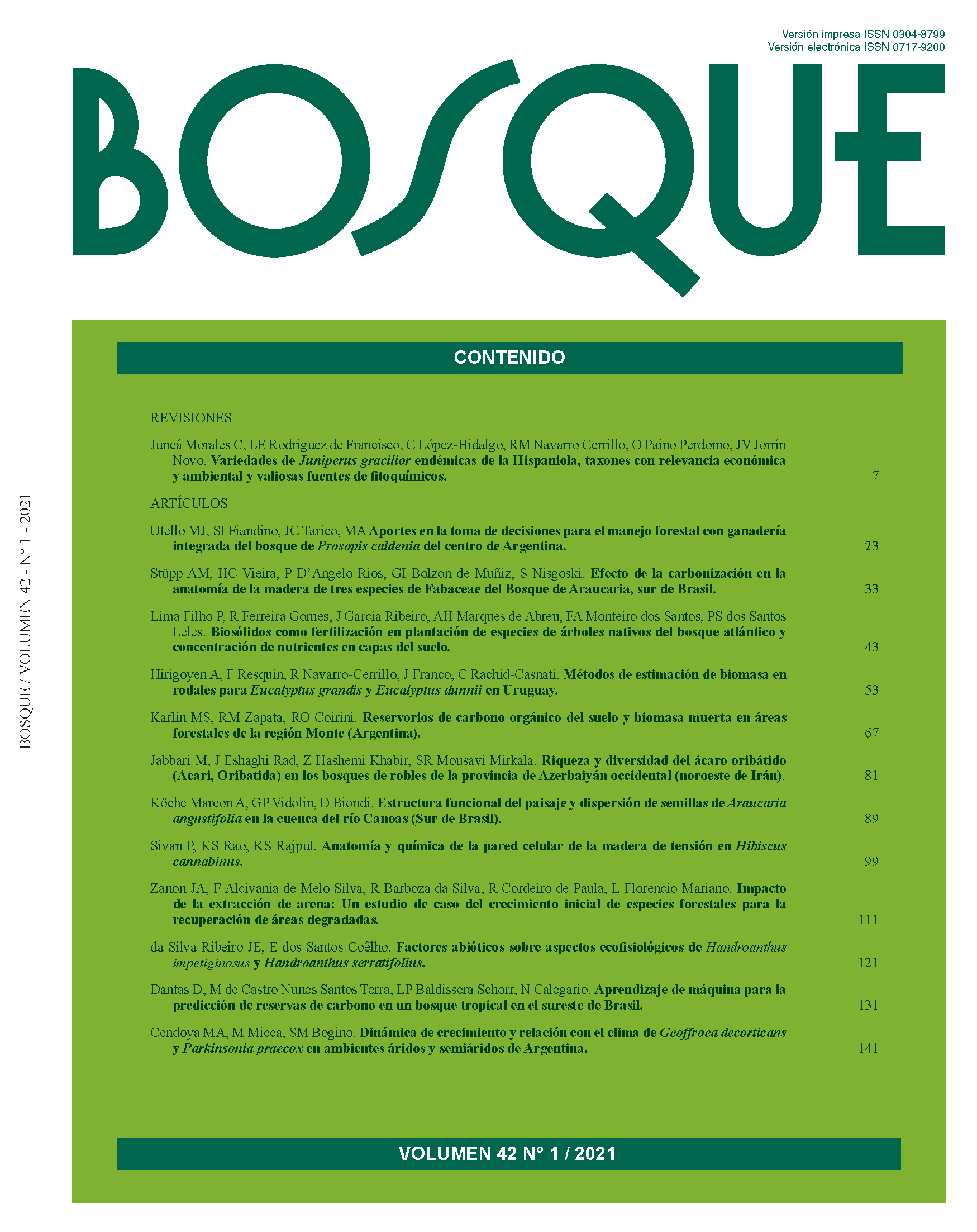Biosolids as planting fertilization of tree species of the Atlantic forest and concentration of nutrients in soil layers
Main Article Content
Abstract
Sewage sludge biosolids, product from urban sewage treatment, are rich in organic matter and nutrients with potential use in forestry. This work aimed at evaluating the growth of Ceiba speciosa, Peltophorum dubium and Sapindus saponaria and the concentration of nutrients and heavy metals in different soil layers under the application of biosolids as planting fertilizer. Two sequential experiments were set up. First in a pot, to determine the best dose for the growth of C. speciosa, using 0.8, 1.6, 3.2 and 6.4 liters of biosolids per pit and the absolute witness. Six months after the planting of C. speciosa seedlings, it was concluded that the best dose provided was around 3.9 liters. The field experiment was carried out using the three tree species with witness treatment or application of 3.0 liters of biosolids per pit, at the time of planting. Growth evaluations occurred at 4 and 12 months after planting and it was observed that C. speciosa and P. dubium responded to the application of biosolids. At 12 months, nitrogen, phosphorus, potassium and heavy metals contents were evaluated in different layers of the soil. It was found that the pits that received biosolids presented significantly higher values for phosphorus (except 75-100 cm soil layer) and heavy metals. There was no leaching of nitrogen, phosphorus and potassium in the soil layers. Heavy metals contents were below the maximum values for levels in the soil profile stipulated by legislation.

